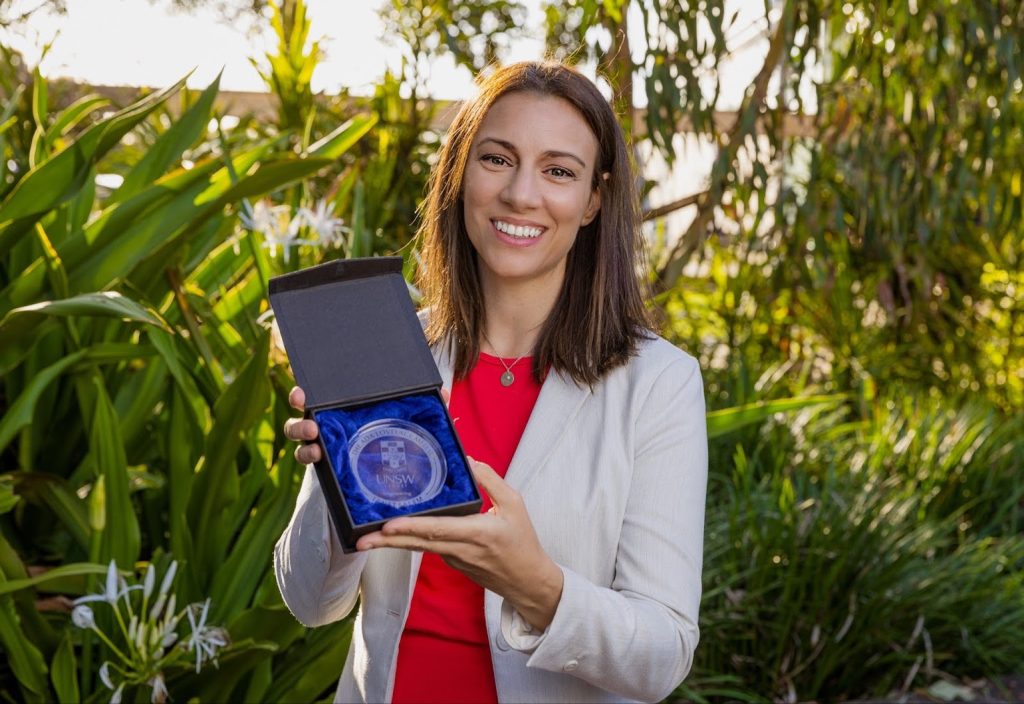Climate tech entrepreneur Janet Salem is paving the way for engineers to drive innovation in the sustainability space.
Throughout her career, Janet Salem has always worked in “non-traditional” engineering fields. She was therefore surprised, albeit pleasantly, to receive the 2022 University of New South Wales (UNSW) Women in Engineering Ada Lovelace Medal for Outstanding Engineer late last year.
“I have brought engineering into entrepreneurship and sustainability,” she told create. “So I see it as a strong message from the engineering community that we should use our skills to push the boundaries of innovation and bring an engineering approach to different fields.”
Indeed, Salem’s engineering career has been anything but conventional. After graduating from UNSW, she gained her first industrial experience through an internship at the United Nations (UN), where she spent 17 years working in circular economy and sustainable lifestyles.
“I started working with the UN Industrial Development Organization on energy efficiency and renewable energy in developing countries,” she says.
“Developing countries need more economic growth, meaning [solutions] need to be as energy-efficient and cost-effective as possible, so renewable energy works really well in that problem space.”
Salem then moved on to roles at the UN’s Environment Programme in the International Resource Panel Secretariat and Asia Pacific office.
“This entailed working with governments, industry and different stakeholder groups on translating scientific information into real policies, programs and action for sustainable consumption and production,” she says.
“We listened to what was needed – whether that was sustainable food systems, fashion, tourism or buildings – then developed technical assistance projects and managed the implementation.”
During this last stint at the UN, Salem dedicated her time to developing an innovation portfolio where she found, supported and shone a light on circular economy start-ups, as well as advocating for sustainability leadership in the fintech sector.
“I was working on finding out from entrepreneurs: how do we help? How do we get more of you? Is there anything blocking your success, such as policy, money or visibility?” she says.
“I got so attached to identifying gaps and finding solutions that I decided to start a PhD at The University of Sydney in integrating sustainability data into financial transactions.”
After finding herself inundated with questions from industry about supplying these data, Salem decided to throw her own hat in the start-up ring by developing environmental company FootprintLab.
“I thought, ‘Let’s see if we can help more companies like this at scale,’” she says. “But to do that, I needed to move to the start-up full time.”
Disclosing carbon footprint data
Throughout Salem’s career, she has noticed that it is not climate solutions that are lacking, but climate action.
“Leadership decisions are still lagging behind what’s technically possible, and what’s desperately needed,” she says.
Through FootprintLab, Salem is trying to bridge that gap by factoring carbon footprint data into key decision points. As money is the key driver of climate change, she chose to target purchase points.
“In a lot of sustainability innovation spaces, we try to see where we can piggyback on change that’s already happening,” she says. “In this case, it’s the digitalisation of transactions.”
With Australia rapidly heading towards a cashless future, there’s a lot more digital data that can be integrated into consumer purchases, company transactions, loans through financial institutions or investments via supply chains.
“The more you can integrate sustainability information into those huge points of interface, such as banks or fintechs, they can then at huge scale let you know, ‘That purchase was three kilograms of carbon footprint,’” she says.
“For example, CommBank is now letting customers know their carbon footprint by automatically scanning their transactions, using our data from The University of Sydney.”
The idea is to help individuals and organisations make better climate decisions through their purchase behaviour.
Organisations can then disclose their carbon footprint, reduce it by looking at which categories are the highest, or offset it. They also have the option to do all three.
“In the long term, once policymakers see that all this is possible, we’d love to see them start to mandate disclosure,” she says.
“Or they can do things that are more creative, such as introducing a carbon price so that low-carbon products [incur] lower taxes, for instance.”
Helping people understand how they generate their carbon footprint is the key to change, Salem thinks.
“People who have an interest in climate change action wouldn’t necessarily know if they have a high carbon footprint because it’s quite hidden,” she says.
“It can get complex really quickly, so just scanning your transactions without having to do a lot of fact finding or research makes it much easier.”
